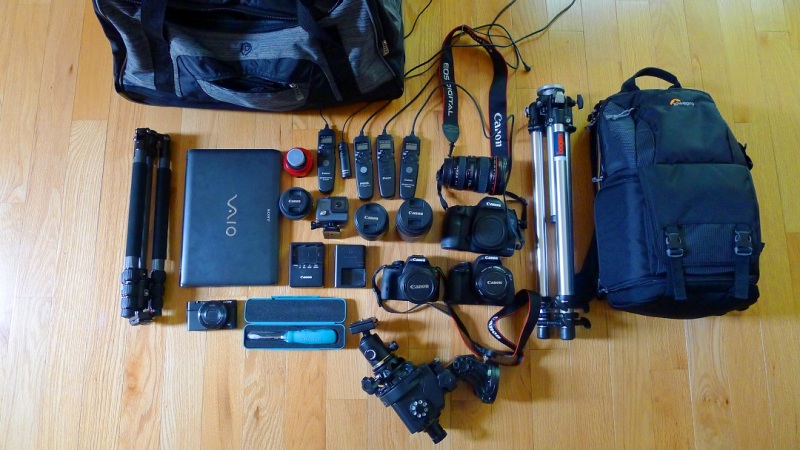
Updated 7/6/17
Chile is arguably the best place in the world to do astrophotography. We were rarely below 8000 ft, the air hovered around 3% humidity, and the area sees 300+ clear nights a year. ACEAP warned us to pack light, as we would be constantly on the move. I spent days doing mock packing, and came to the conclusion that taking a telescope, even a small one like my FS60, would be impossible. Any astrophotography would have to be done using conventional camera lenses. Luckily I do own an EOS 5D Mark 3 and a nice 17-40 mm f/4 L lens.
But nightscape photography is a world of its own, as different from the deep sky astrophotography I usually do as it is from webcam planetary imaging. Nightscape astrophotographers go "wide and fast" with their optics. It's all about speed with these folks. The 24 mm f/1.4 Rokinon is a popular lens, for example. The idea is to shoot wide open at crazy-high ISOs (4000 or 5000 is not uncommon) and capture all the light you need before the stars start to blur. Some of the amazing nightscapes you see are the result of single 30 second exposures. Any digital artifacts can be fixed in post-processing.
I'm old fashioned. I resisted using some of these techniques. But as the nights wore on, I began to see the logic in their arguments. Everyone told me that my f/4 lens, fast by my usual standards, was too slow. They were right. Soon I was dialing up my ISO to 5000 in an attempt to capture as much light as quickly as possible. For tracking, I used a Skywatcher Star Adventurer mount. I saw these at NEAF 2017 and ordered one after getting positive comments from club members. The Star Adventurer behaves much like a conventional equatorial mount. I brought along my trusty old Bogen 3001. The Bogen/Skywatcher combination worked well. The only problem was mine - despite several nights, I could never get an accurate southern polar alignment. You never realize what a luxury it is to have Polaris in the north until you have to polar align in the southern hemisphere, on...nothing. The armchair photographer will no doubt have read up on several methods for rough polar alignment in the south. Yeah, I read them too. I found them all equally unsatisfactory. The problem is using the "Southern Cross Method" or the "Magellanic Cloud Method" is they involve drawing huge geometric shapes in the sky and there is a ton of room for error. I eventually settled on a complicated algorithm involving several (very) dim stars in Octans.

Despite my best efforts to condense my equipment roster, I still wound up taking all of this to Chile with me. Picture lugging all this stuff through
six airports. I had very little room left over for clothes.
The lucky part of this is...you are in the best place in the world to do astrophotography. You're shooting fish in a barrel. Point your rig anywhere, snap away, and you can't help but catch something good. With my lens zoomed all the way out to 17 mm, I found I could be off by 5-7 degrees on my polar alignment and the images still looked satisfactory.
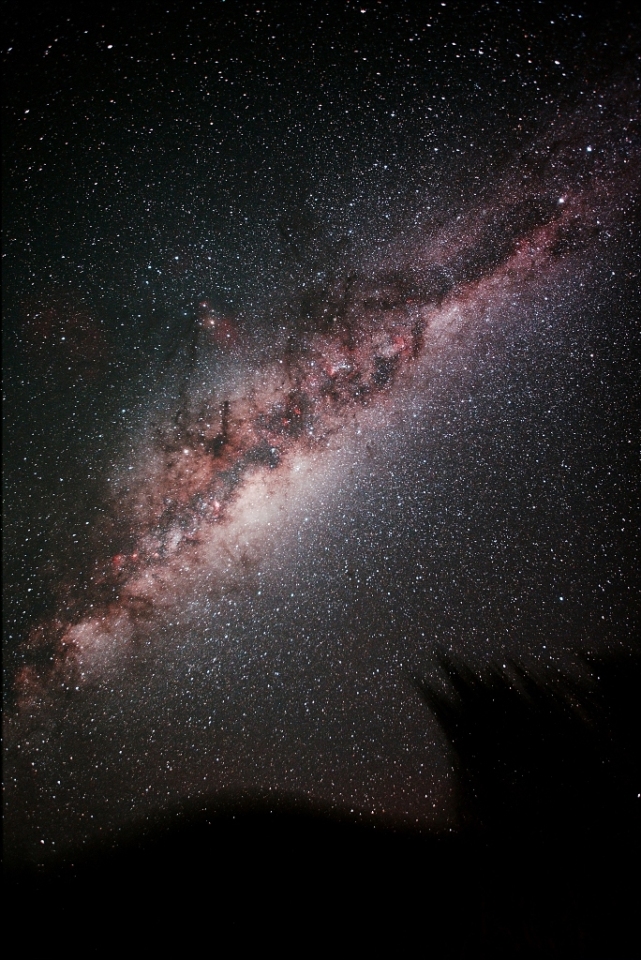
The central part of the Milky Way. 2.5 minute subs stacked with darks.
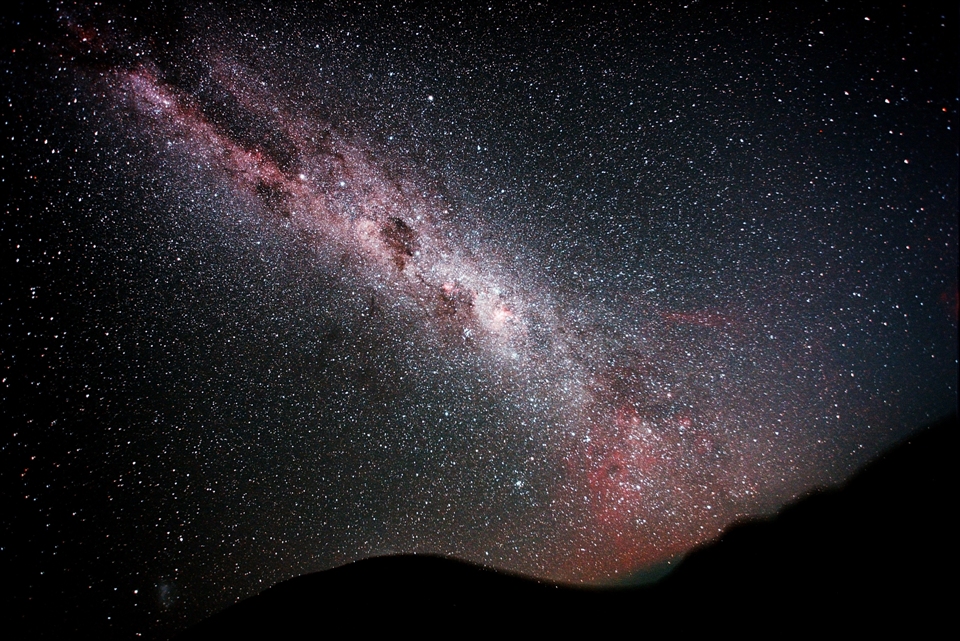
The Southern Cross Area. 2.5 minute subs stacked with darks.
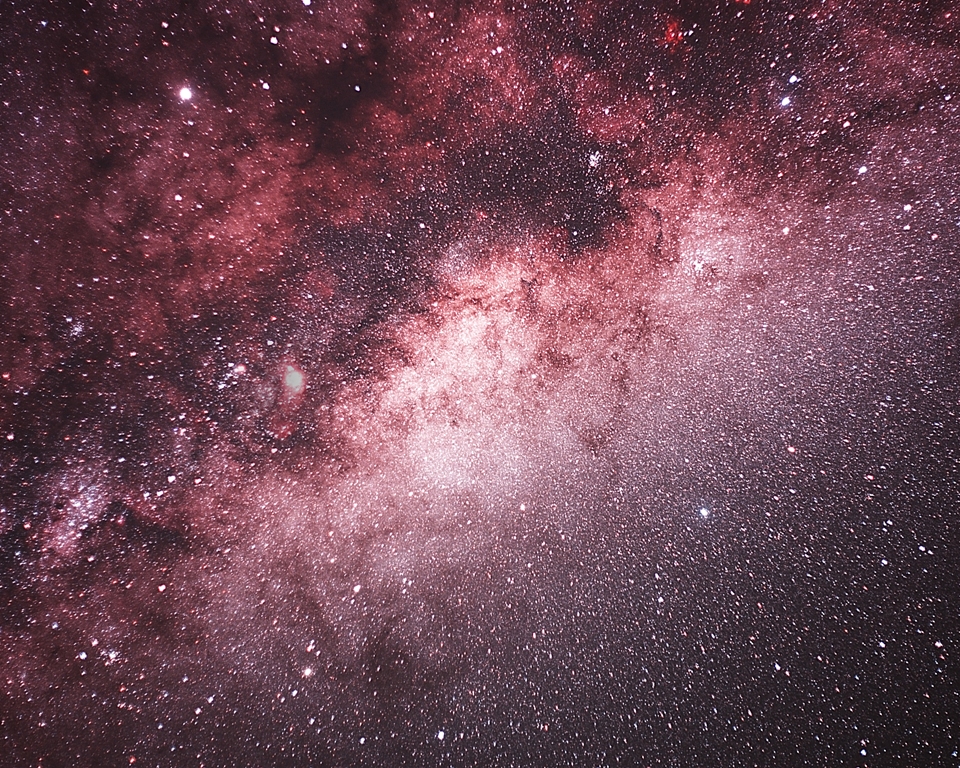
M8 and the central part of Sagittarius with the "Nifty Fifty" 50 mm f/1.8 Canon EF lens at f/2.0. I began to see the advantages of a fast lens with
this shot. This is a capture at only 90 seconds!
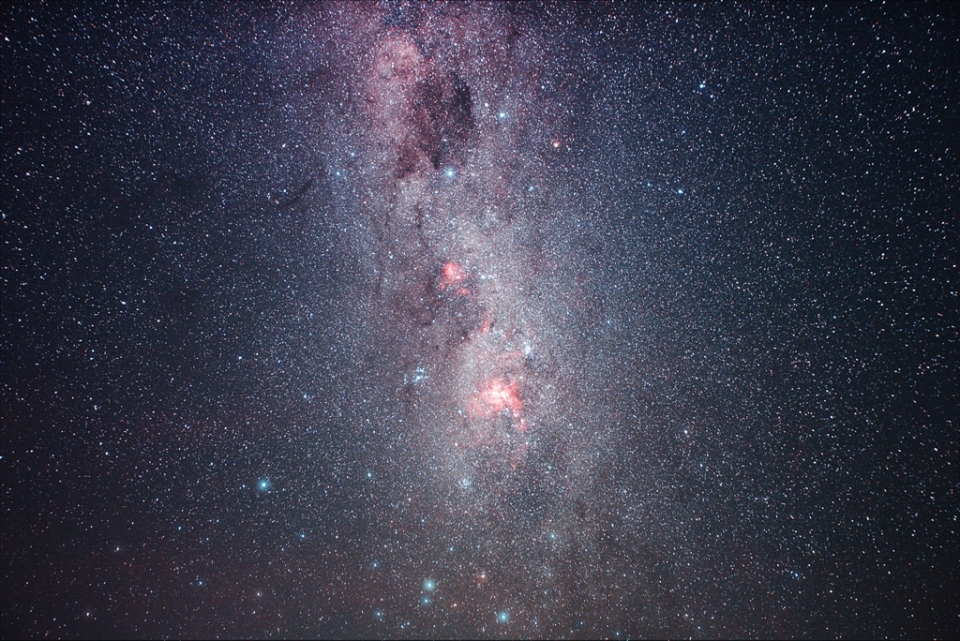
The Eta Carina Nebula and Coal Sack region with the 17-40 lens zoomed into 40 mm. 3 minute subs stacked with darks.
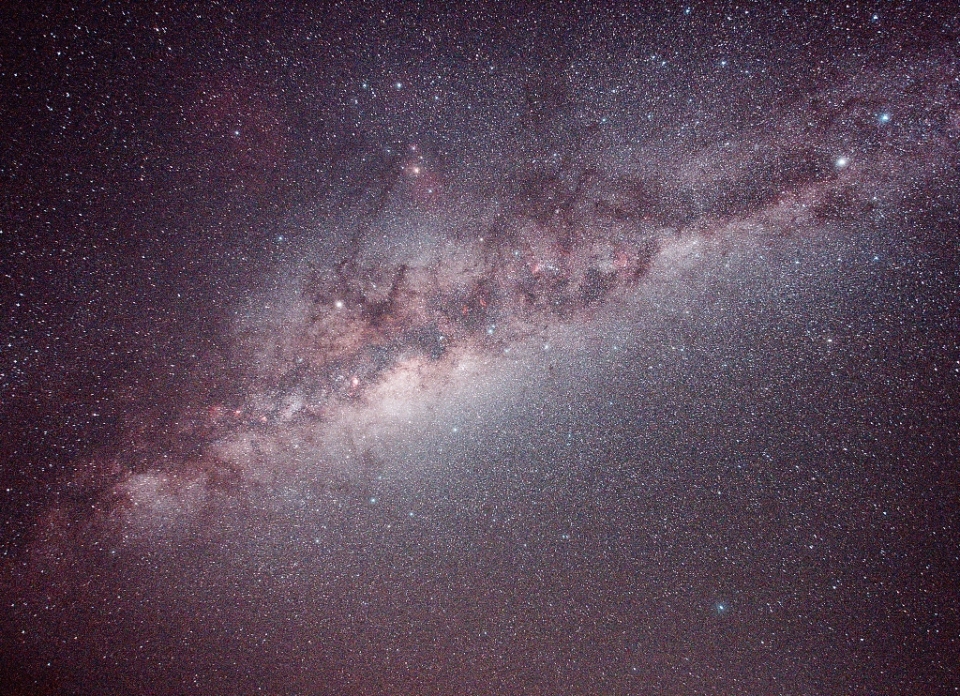
The Greatest Show on Earth. The Milky Way at 4 minute subs stacked with darks. 17 mm f/4. If I'd gone any longer I'd risk blowing out the pixels.
Amazing.
-Ed
1) Introduction - Ed Goes to Chile!
2) The cities, towns, and villages - Santiago, La Serena, and San Pedro
3) The observatories and scientific installations (Part 1)
3a) The observatories and scientific installations (Part 2)
4) Astrophotos (This page)